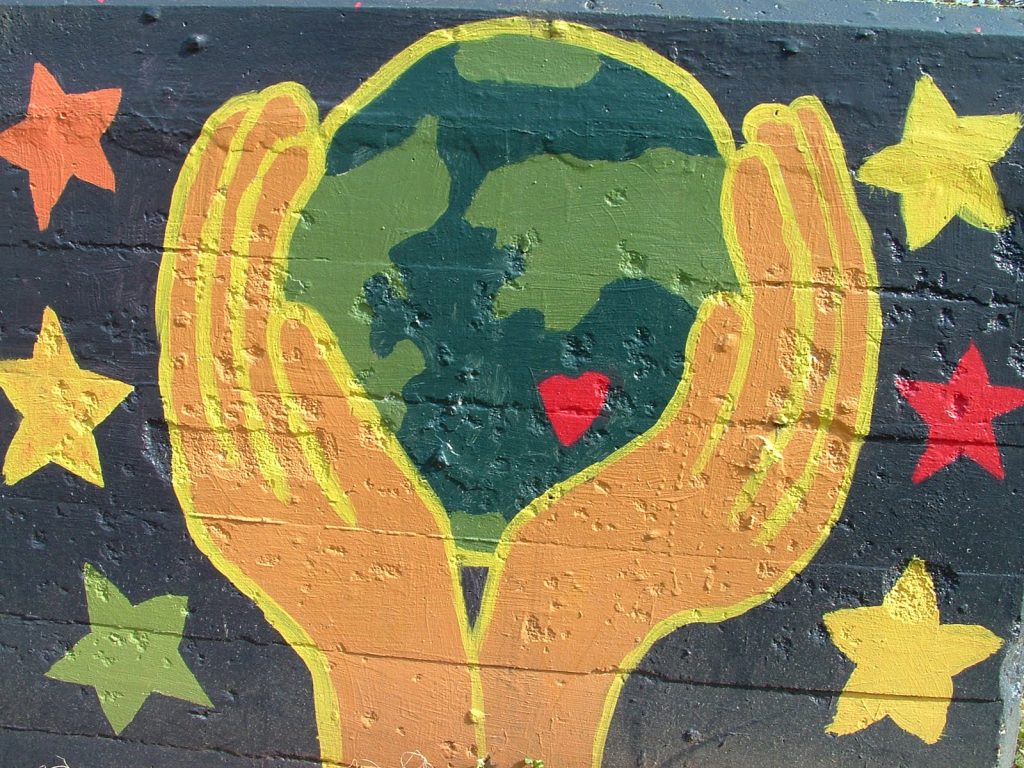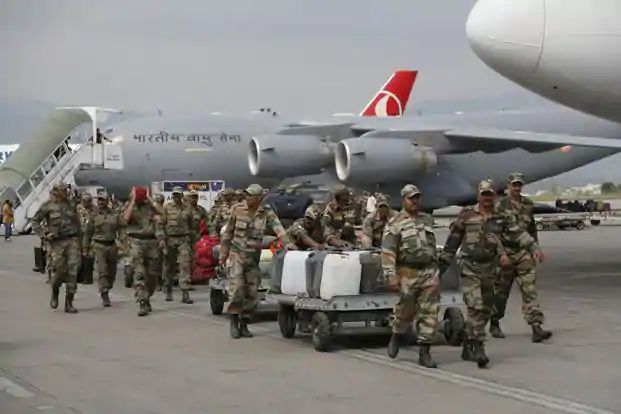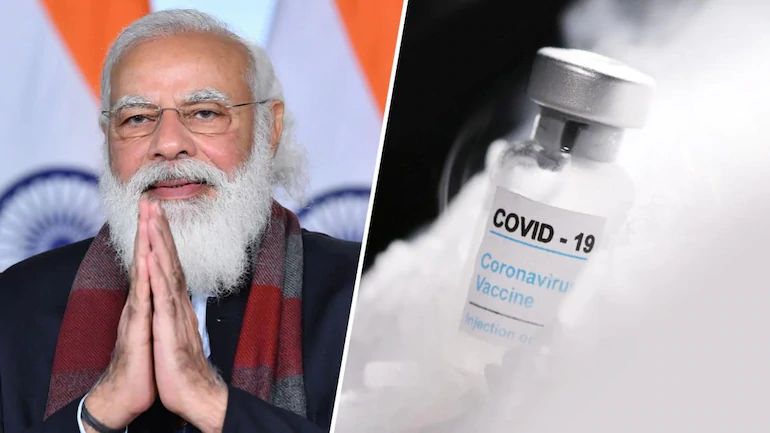
- When the world was reeling under COVID-19, India under the leadership of PM Narendra Modi, stepped up to provide medical assistance to not only domestic but also to other countries in the world.
- India does not in any way wish to dominate any country in the world with forced drought, control of river flows, debt traps, changing land, air, water boundaries
- Donors’ clubs like the OECD (Organization for Economic Cooperation and Development), or China’s Credit have attached conditionalities to the assistance they offer. China is known to use aid to further their commercial interests eg Resources, Military Strategy, Strategic and economic goals.
- The 2015 Nepal earthquake, one of the deadliest in its history, India, launched Operation Maitri by deploying the Indian Army, the Air Force, and other specialised teams.
- Some of the big-ticket aid programmes that have propelled India into the donors league include a $1 billion (about Rs 5,630 crore) line of credit to Bangladesh and pledges of $2 billion in reconstruction assistance to Afghanistan.
- In October 2018, the ‘India for Humanity’ initiative was launched to commemorate the 150th birth anniversary of Mahatma Gandhi and honour his service to humanity.
- During the current Corona crisis, India has extended COVID-related medical assistance including testing kits, protective gear and Hydroxychloroquine and other medicines to around 90 plus countries
India is one of the few countries in the World which believes in “Vasudhaiva Kutumbakam” ‘the world is one family’. It does not in any way wish to dominate any country in the world with forced drought, control of river flows, debt traps, changing land, air, water boundaries of its big to medium to small neighbors. It traces its roots of ‘manava dharma’ within itself and goes a step forward for perseverance of peace and security in the World.
The main instruments of India’s Humanitarian assistance include Lines of Credit (LOC), Grant assistance, Small Development Projects (SDP), Technical Consultancy, Disaster Relief and Humanitarian aid, as well as capacity-building programmes under Indian Technical and Economic Cooperation Programme (ITEC).
When the world was reeling under COVID-19, India under the leadership of PM Narendra Modi, stepped up to provide medical assistance to not only domestic but also to other countries in the world. India has helped the United States, a few European, Latin American, African, and Middle East countries by assisting them with medical supplies and professionals to fight COVID-19 pandemic. With this act India has upgraded its profile to join the ranks of donors and is increasingly extending economic development, medical assistance to countries in South Asia, Africa, Central Asia, Latin America, America, Europe and the Caribbean. South East Asia, East and Central Asia, the Caribbean, Latin America, Pacific Island Countries, etc. India’s development assistance is based on the needs of the partner countries and is geared towards responding to as many of the requests received.
Donors’ clubs like the OECD (Organization for Economic Cooperation and Development), or China’s Credit have attached conditionalities to the assistance they offer. China is known to use aid to further their commercial interests eg Resources, Military Strategy, Strategic and economic goals. For India, ‘World is a Family’ and hence helping a Nation in distress is more important than politics. So India has stressed on development effectiveness, using local resources and local expertise. Medically it is helping in stockpiling of necessary medicines and attending to Medical Emergencies as part of its humanitarian duty.
India’s development projects like Parliament Construction in Afghanistan to schools and hospitals go a long way in bolstering goodwill. India’s broadening foreign aid spectrum must be seen in this dynamic context “equal partner” relationship between the donor and recipient countries. The NDA government’s flagship “Neighbourhood Policy” announced at the very outset of its term gave ample space to New Delhi to boost its financial assistance profile and build complementarities across the World.
Helping a Nation in distress more important than politics

The 2015 Nepal earthquake, one of the deadliest in its history, India, launched Operation Maitri by deploying the Indian Army, the Air Force, and other specialised teams. Claiming it to be its largest ever disaster relief operation, India’s response garnered praise from many quarters with a top UN official acknowledging the country’s role as a “first responder”.
Examples of major projects India is funding under the grant assistance include the construction of 50,000 houses in northern and eastern Sri Lanka for Tamils displaced by the three-decade old civil war that ended in May 2009, and that of a 220kV transmission line from the northern Afghan city of Pul-e-Khumri to Kabul. Some of the big-ticket aid programmes that have propelled India into the donors league include a $1 billion (about Rs 5,630 crore) line of credit to Bangladesh and pledges of $2 billion in reconstruction assistance to Afghanistan.
During 2017-18, 10,918 civilian training slots were offered under ITEC Programme to 161 partner countries for various short-term and medium-term courses in institutions spread all over India. The civilian training programme, fully sponsored by the Government with more than sixty-eight premier institutions running courses, conducted around 309 courses for working professionals in a wide and diverse range of skills and disciplines such as Agriculture, Food and Fertilizers; Banking, Finance, Accounts and Audit; Education; Engineering & Technology; English Language; Environment and Climate Change; Government Function; Health and Yoga; Human Resource Development and Planning; Irrigation and Water Resources; Information Technology (IT) and Business English; Journalism; Management and Leadership; Power, Renewable & Alternative Energy, Project Management; Rural Development and Poverty Alleviation; Small and Medium Enterprises (SMEs) and Entrepreneurship; Sustainable Development and South-South Cooperation; Telecommunication; Textile; Trade and International Market; Urban Planning and Women Empowerment.
Deputation of experts under the ITEC programme has served as a very important tool for sharing Indian expertise with the developing world. As of November 2017, forty-nine experts in various fields were on deputation to partner countries in areas of Information and Communication Technology (I&CT), Coconut experts, English teachers and Ayurveda.
India for Humanity
Cooperation on the humanitarian front was extended by India to countries affected by disasters. Inter alia, medicines have been made available to Mozambique, Nicaragua, Libya and Myanmar. Food items have been supplied to Lesotho, Namibia, Zimbabwe, Syria, Bangladesh, DPRK and Myanmar. Cash assistance has been provided to Croatia, Burundi, Serbia and Zimbabwe etc. Medical supplies have been provided to Nepal, Afghanistan, Zambia, Yemen, Syria, Mozambique, Tanzania etc. We are also undertaking the building of houses in Nepal, Sri Lanka and Afghanistan. India has also extended development cooperation to Cuba and Tanzania. Tractors and implements have been provided to Cuba and NCERT books have been provided to Tanzania.
In October 2018, the ‘India for Humanity’ initiative was launched to commemorate the 150th birth anniversary of Mahatma Gandhi and honour his service to humanity. In collaboration with the NGO Bhagwan Mahaveer Viklang Sahayata Samiti (BMVSS), popularly known as “Jaipur Foot,” the programme features year-long series of artificial limb fitment camps in a number of countries. A number of artificial limb fitment camps have already been organized in several countries in Asia and Africa.
With it Government of India’s assistance programme more than 50 cultural and heritage projects have been completed, including restoration of the major shrines like:
- Ananda Temple; Shwedagon Pagoda (Myanmar),
- Restoration of Thiruketheeswaram temple; installation of Replica of Sarnath Buddha (Sri Lanka);
- Indian Gallery at Sacred Tooth Relic Temple, Kandy (Srilanka),
- Reconstruction of various Dzongs; Tango Buddhist College (Bhutan),
- Renovation of Bala Tripura Sundari Temple;
- Construction of Dharamshalas-Pashupatinath temple (Nepal),
- Conserving Girish Chandra Sen’s Residence as Museum; Manipuri Cultural complex at Moulvibazar (Bangladesh),
- Restoration of Mosques (Maldives),
- Rstoration of storPalance; Blue Mosque (Afghanistan),
- Setting up of National Archives and Library (Mauritius),
- Building of National War Memorial (Tribute to Indian Soldiers in World War I) (France),
- Borobudur and Prambanan temples (Indonesia),
- Gifting statue of Lord Buddha to Gandan Monastery (Mongolia),
- Conservation of My Son Group of Temples (Vietnam),
- Conservation of Vat Phou Shiva temple (Laos),
- Conservation of Ta Prohm, Angkor Wat, Preah Vihear temples (Cambodia),
- Building of Torana gate (Malaysia)
Currently around 25 cultural and heritage projects are under implementation in various countries.
According to the 2018-19 Budget, India plans to spend Rs 9,069.34 crore on various projects in foreign countries. This is not only a hike of 25% from the last financial year’s revised estimates, but also an ambitious 54% increase from what the Indian government actually spent as foreign loans and grants in 2017-18.
Relief to the world during COVID-19

Finally one can say that though India has its limitations in Resources and Energy it is trying to give much to the world whether it is Yoga, Zero, Science, Philosophy and more. During the current Corona crisis, India has extended COVID-related medical assistance including testing kits, protective gear and Hydroxychloroquine and other medicines to around 90 plus countries across the globe and its role as a reliable supplier of pharmaceuticals and medicines is globally recognised and appreciated.
Apart from supply of medical relief, India also extended technical assistance by way of dispatching rapid response teams to Kuwait and Maldives. Several e-ITEC webinars on handling the Corona pandemic have also been hosted for sharing experience and best practices with experts from other countries. Discovering the vaccines for COVID-19 in parallel in quick time and dispatching them to several neighbors as a timely gift, made India stand tall in the world. India’s vaccine diplomacy has been well received and appreciated the world over.
World expects more and India is ready to play a great role for “Vasudhaiva Kutumbakam” – ‘the world is one family’ and Manava Dharma where all are happy without domination, suppression and fear. Ultimately, a pure society will be built where Indian values for life will be appreciated and imbibed by all.
(Disclaimer: The opinion expressed in this article is author’s own and does not necessarily reflect the views of SamvadaWorld)
M.AM.PhiL/(PhD SNU South Korea)
